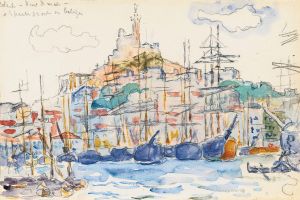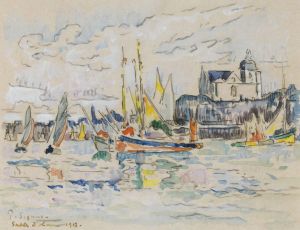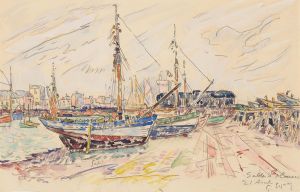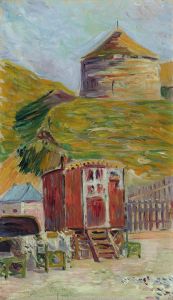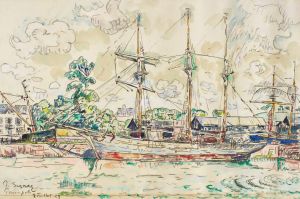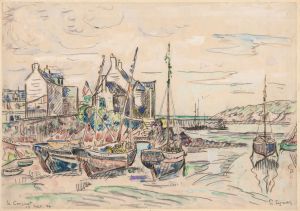
Port-En-Bessin
A hand-painted replica of Paul Signac’s masterpiece Port-En-Bessin, meticulously crafted by professional artists to capture the true essence of the original. Each piece is created with museum-quality canvas and rare mineral pigments, carefully painted by experienced artists with delicate brushstrokes and rich, layered colors to perfectly recreate the texture of the original artwork. Unlike machine-printed reproductions, this hand-painted version brings the painting to life, infused with the artist’s emotions and skill in every stroke. Whether for personal collection or home decoration, it instantly elevates the artistic atmosphere of any space.
Paul Signac's painting Port-En-Bessin is a notable example of his work as a leading figure in the Neo-Impressionist movement. Created in 1888, this artwork reflects Signac's dedication to the technique of Pointillism, a method of painting developed alongside Georges Seurat. Pointillism involves the application of small, distinct dots of color that, when viewed from a distance, blend together to create a cohesive image. This technique was rooted in scientific theories of color and perception, aiming to achieve greater luminosity and harmony in art.
The painting depicts the harbor of Port-en-Bessin, a small fishing village located on the Normandy coast of France. Signac was known for his fascination with maritime themes, and this work is a testament to his love for the sea and coastal landscapes. The composition captures the quiet charm of the harbor, with boats, water, and the surrounding architecture rendered in vibrant, carefully placed dots of color. The use of complementary colors and the meticulous arrangement of tones demonstrate Signac's mastery of the Pointillist technique.
Port-En-Bessin is significant not only for its artistic qualities but also for its historical context. During the late 19th century, Neo-Impressionism emerged as a response to the spontaneity of Impressionism, emphasizing a more systematic and scientific approach to painting. Signac, as one of the movement's key proponents, sought to push the boundaries of traditional Impressionist methods by incorporating these new ideas into his work.
The painting is also an example of Signac's broader interest in capturing the interplay of light and water, a recurring theme in his oeuvre. His choice of subject matter—harbors, rivers, and coastal scenes—reflects his deep appreciation for the natural world and his desire to convey its beauty through innovative artistic techniques.
Today, Port-En-Bessin is recognized as an important work within Signac's career and the Neo-Impressionist movement as a whole. It serves as a reminder of the artist's commitment to exploring the possibilities of color and form, as well as his enduring influence on modern art. The painting is housed in the Musée d'Orsay in Paris, where it continues to be admired by art enthusiasts and scholars alike.





